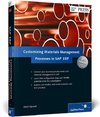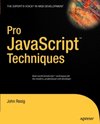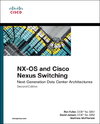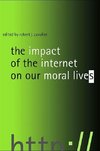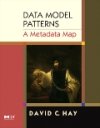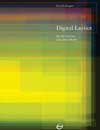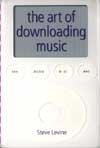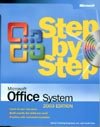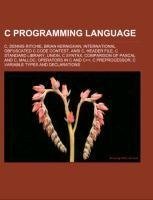
-
 Anglický jazyk
Anglický jazyk
C programming language
Source: Wikipedia. Pages: 107. Chapters: C, Dennis Ritchie, Brian Kernighan, International Obfuscated C Code Contest, ANSI C, Header file, C standard library, Union, C syntax, Comparison of Pascal and C, Malloc, Operators in C and C++, C preprocessor, C... Viac o knihe
Na objednávku, dodanie 2-4 týždne
23.50 €
bežná cena: 26.70 €
O knihe
Source: Wikipedia. Pages: 107. Chapters: C, Dennis Ritchie, Brian Kernighan, International Obfuscated C Code Contest, ANSI C, Header file, C standard library, Union, C syntax, Comparison of Pascal and C, Malloc, Operators in C and C++, C preprocessor, C variable types and declarations, Compatibility of C and C++, Standard streams, Atan2, Sizeof, C string, C99, Typedef, Setcontext, Volatile variable, Duff's device, The C Programming Language, Struct, Precompiled header, Wide character, C1X, Undefined behavior, List of C functions, Strlcpy, Intel Memory Model, Sequence point, Digraphs and trigraphs, Impulse C, Interactive C, Blocks, Include guard, MISRA C, Ldexp, Pragma once, Long double, The lexer hack, Function prototype, ANSI/ISO C Specification Language, Offsetof, Variadic macro, Underhanded C Contest, Restrict, Strtod, Comma operator, Atoi, Size t, Strtol, F2c, Signature, Header-only, Prefix header, C Traps and Pitfalls, PhysicsFS, CFLAGS, Clone, Fputs, Swab, Translation unit, Pro*C, Storage classes in C, Painted blue, BCX, Source Annotation Language, Remove, C for Dummies, LDAP Application Program Interface, Ltoa, C Primer Plus, Sigprocmask. Excerpt: The syntax of the C programming language is a set of rules that specifies whether the sequence of characters in a file is conforming C source code. The rules specify how the character sequences are to be chunked into tokens (the lexical grammar), the permissible sequences of these tokens and some of the meaning to be attributed to these permissible token sequences (additional meaning is assigned by the semantics of the language). C syntax makes use of the maximal munch principle. The C language represents numbers in three forms: integral, real and complex. This distinction reflects similar distinctions in the instruction set architecture of most central processing units. Integral data types store numbers in the set of integers, while real and complex numbers represent numbers (or pair of numbers) in the set of real numbers in floating point form. All C integer types have and variants. If or is not specified explicitly, in most circumstances is assumed. However, for historic reasons plain is a type distinct from both and . It may be a signed type or an unsigned type, depending on the compiler and the character set (C guarantees that members of the C basic character set have positive values). Also, bit field types specified as plain may be signed or unsigned, depending on the compiler. C's integer types come in different fixed sizes, capable of representing various ranges of numbers. The type occupies exactly one "byte" (the smallest addressable storage unit), which is typically 8 bits wide. (Although can represent any of C's "basic" characters, a wider type may be required for international character sets.) Most integer types have both and varieties; signed integer types may use a two's complement, ones' complement, or sign-and-magnitude representation. In many cases, there are multiple equivalent ways to designate the type; for example, and are synonymous. The representation of some types may include unused "padding" bits, which occupy storage but are not included i
- Vydavateľstvo: Books LLC, Reference Series
- Rok vydania: 2011
- Formát: Paperback
- Rozmer: 246 x 189 mm
- Jazyk: Anglický jazyk
- ISBN: 9781157061342
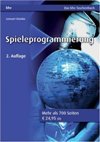
 Nemecký jazyk
Nemecký jazyk 



